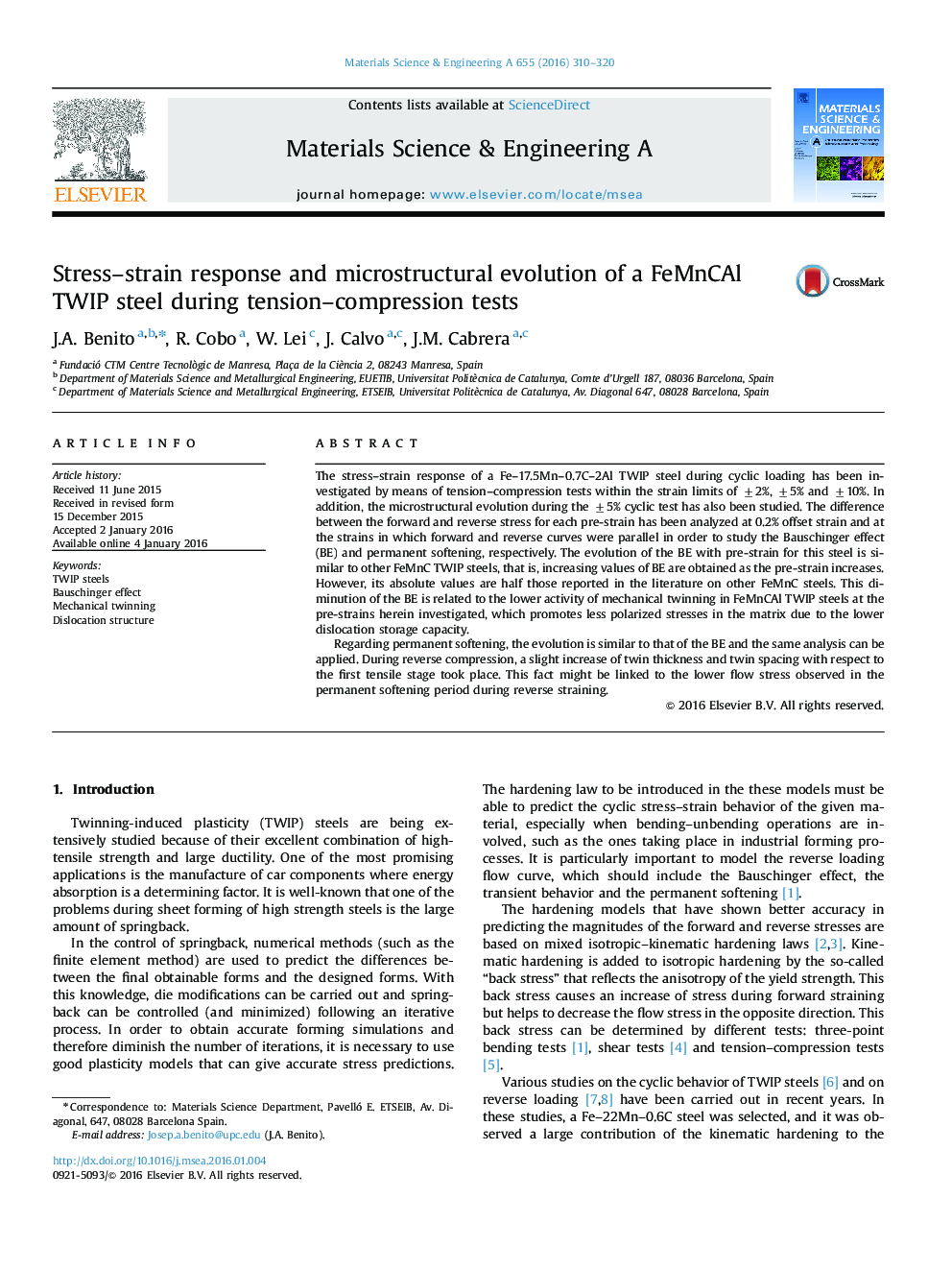| Article ID | Journal | Published Year | Pages | File Type |
|---|---|---|---|---|
| 1573701 | Materials Science and Engineering: A | 2016 | 11 Pages |
The stress–strain response of a Fe–17.5Mn–0.7C–2Al TWIP steel during cyclic loading has been investigated by means of tension–compression tests within the strain limits of ±2%, ±5% and ±10%. In addition, the microstructural evolution during the ±5% cyclic test has also been studied. The difference between the forward and reverse stress for each pre-strain has been analyzed at 0.2% offset strain and at the strains in which forward and reverse curves were parallel in order to study the Bauschinger effect (BE) and permanent softening, respectively. The evolution of the BE with pre-strain for this steel is similar to other FeMnC TWIP steels, that is, increasing values of BE are obtained as the pre-strain increases. However, its absolute values are half those reported in the literature on other FeMnC steels. This diminution of the BE is related to the lower activity of mechanical twinning in FeMnCAl TWIP steels at the pre-strains herein investigated, which promotes less polarized stresses in the matrix due to the lower dislocation storage capacity.Regarding permanent softening, the evolution is similar to that of the BE and the same analysis can be applied. During reverse compression, a slight increase of twin thickness and twin spacing with respect to the first tensile stage took place. This fact might be linked to the lower flow stress observed in the permanent softening period during reverse straining.
